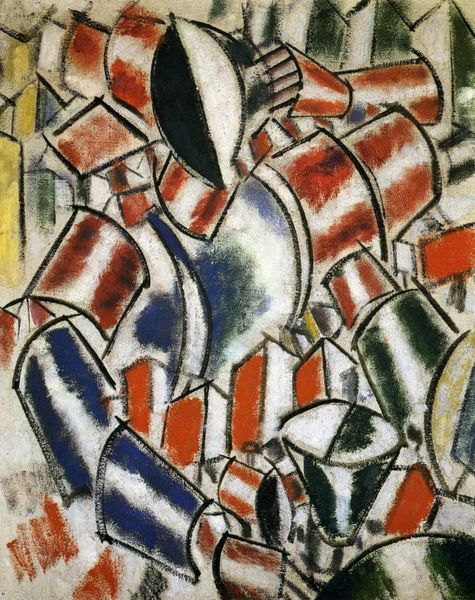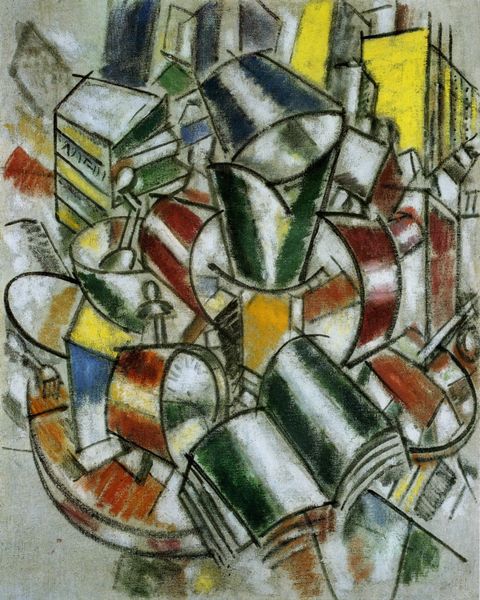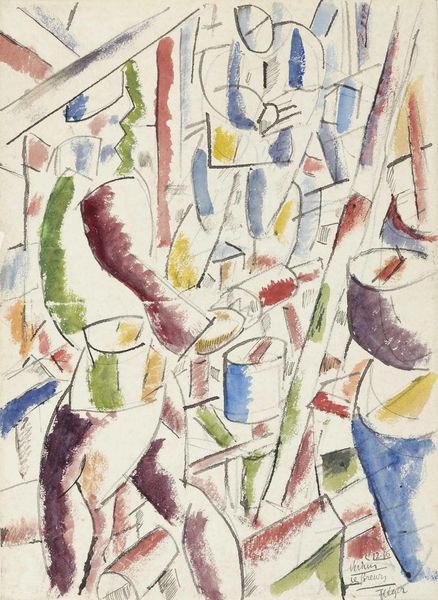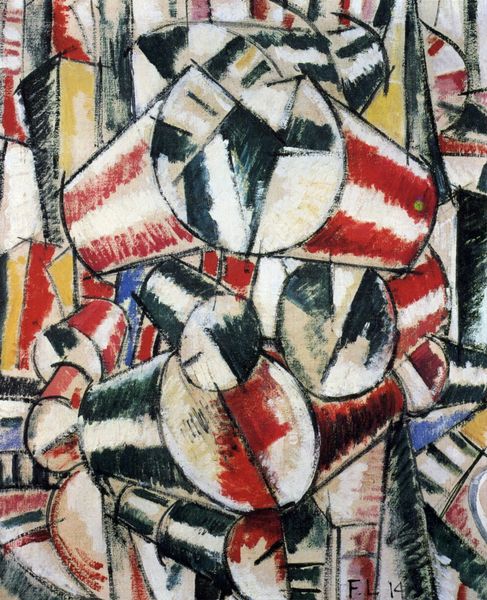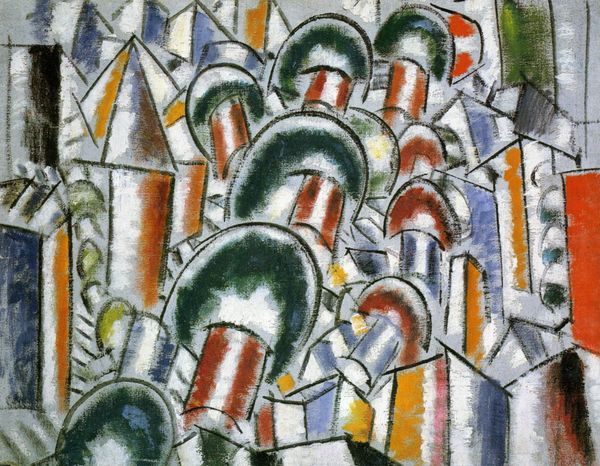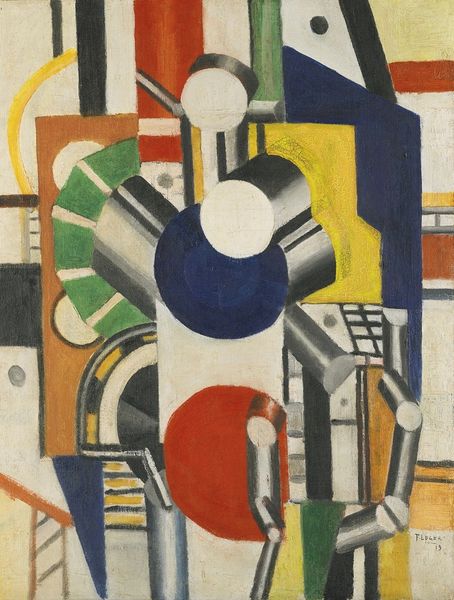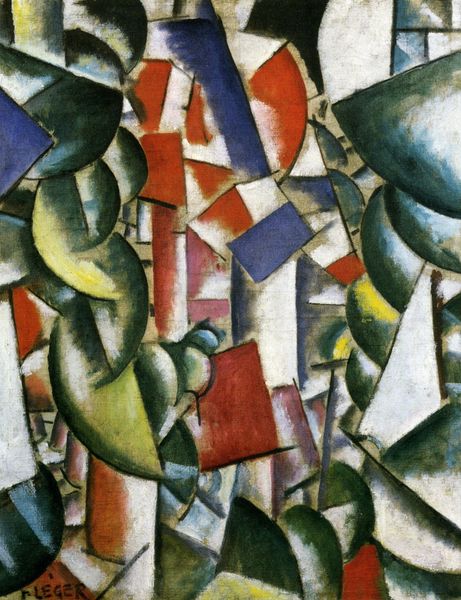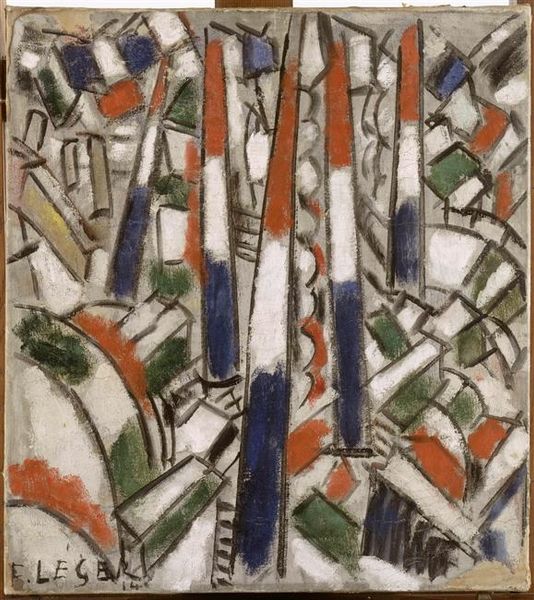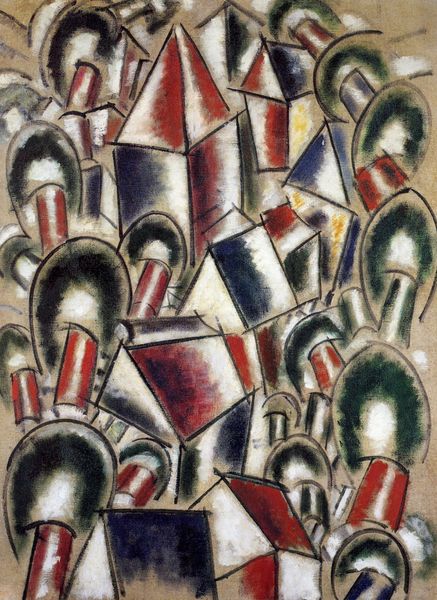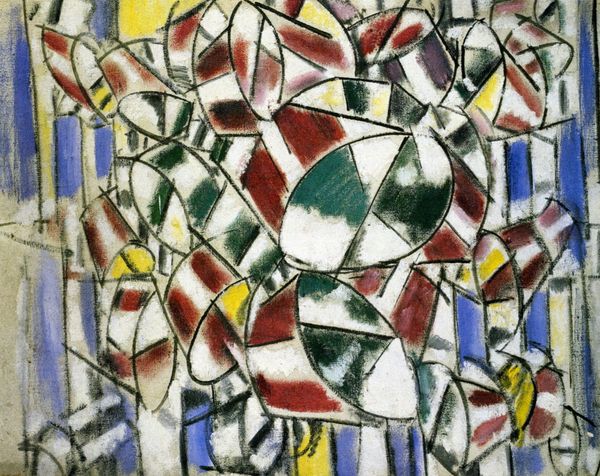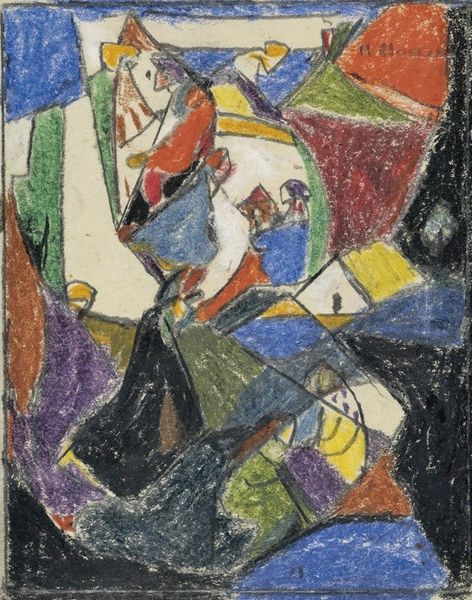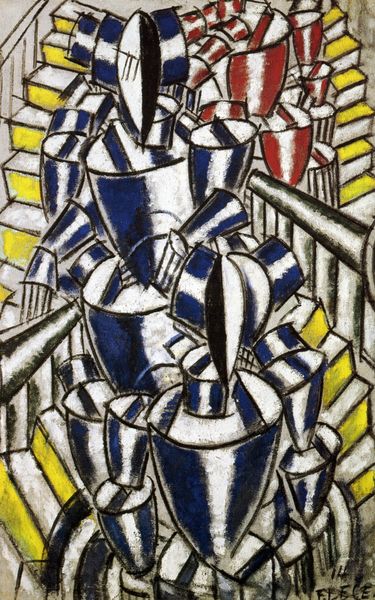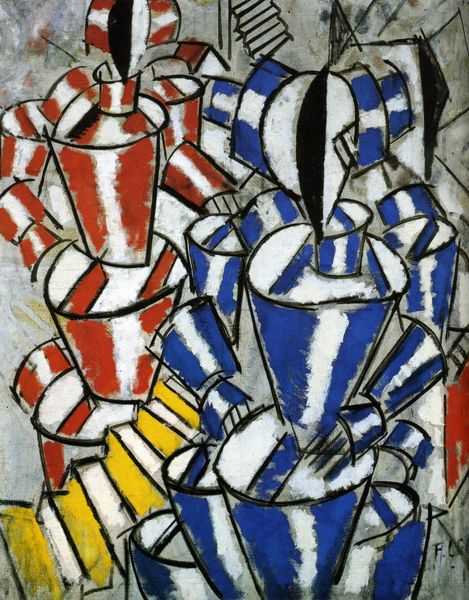
painting, oil-paint
#
portrait
#
cubism
#
abstract painting
#
painting
#
oil-paint
#
acrylic on canvas
#
geometric-abstraction
#
modernism
Copyright: Public domain US
Curator: Ah, Fernand Léger's "The Woman with the Armchair," painted in 1913. A pivotal work from his Cubist period. Editor: Well, hello there, geometry! It’s like an exploded view of a person—a portrait that’s been put through a blender, but in a totally compelling way. The color palette is strong: red, white, and blue—almost patriotic, in a fractured kind of way. Curator: Yes, those primary colors resonate deeply. Léger, along with other Cubists, was exploring how to depict three-dimensional reality on a two-dimensional surface, pushing the boundaries of representation and challenging conventional ideas of beauty. His experience in World War I and his time around machines influenced him quite deeply in his artistic choices. Editor: Absolutely. You can see that machine-age influence in the tubular forms and hard edges. It's as if the figure has been broken down into component parts—cylinders, cones, and spheres. It makes me wonder what that time of mass industrial production really did to our perception of beauty, to the body as a work of art? Curator: Léger felt that industrial forms held their own inherent beauty. After the war, he wanted to create an art that celebrated the machine age, one that was accessible and democratic. This work is also one way of reckoning with tradition in an era of machines and of mechanical production and warfare, which profoundly impacted modern art in Europe and the US. Editor: There’s an inherent tension in the painting, too. While it looks incredibly modern and almost cold, there's still something undeniably human lurking in those geometric shapes. The woman—or the idea of a woman—persists even amidst all the abstraction. You just can't put it away, and something is definitely there despite not seeing what’s there to understand it all, too! It gives us that extra dose of abstract realness if I may add. Curator: Precisely. This painting is an exploration, an effort to depict a new kind of reality in the modern world, to reflect the way we perceive objects and each other in fragmented moments and at different vantage points, yet with bold confidence in that abstraction. Editor: So true! I will leave thinking about seeing a body transformed and reimagined. Thank you! Curator: Indeed. A painting that asks us to reconsider our perspectives, both artistically and culturally.
Comments
No comments
Be the first to comment and join the conversation on the ultimate creative platform.
